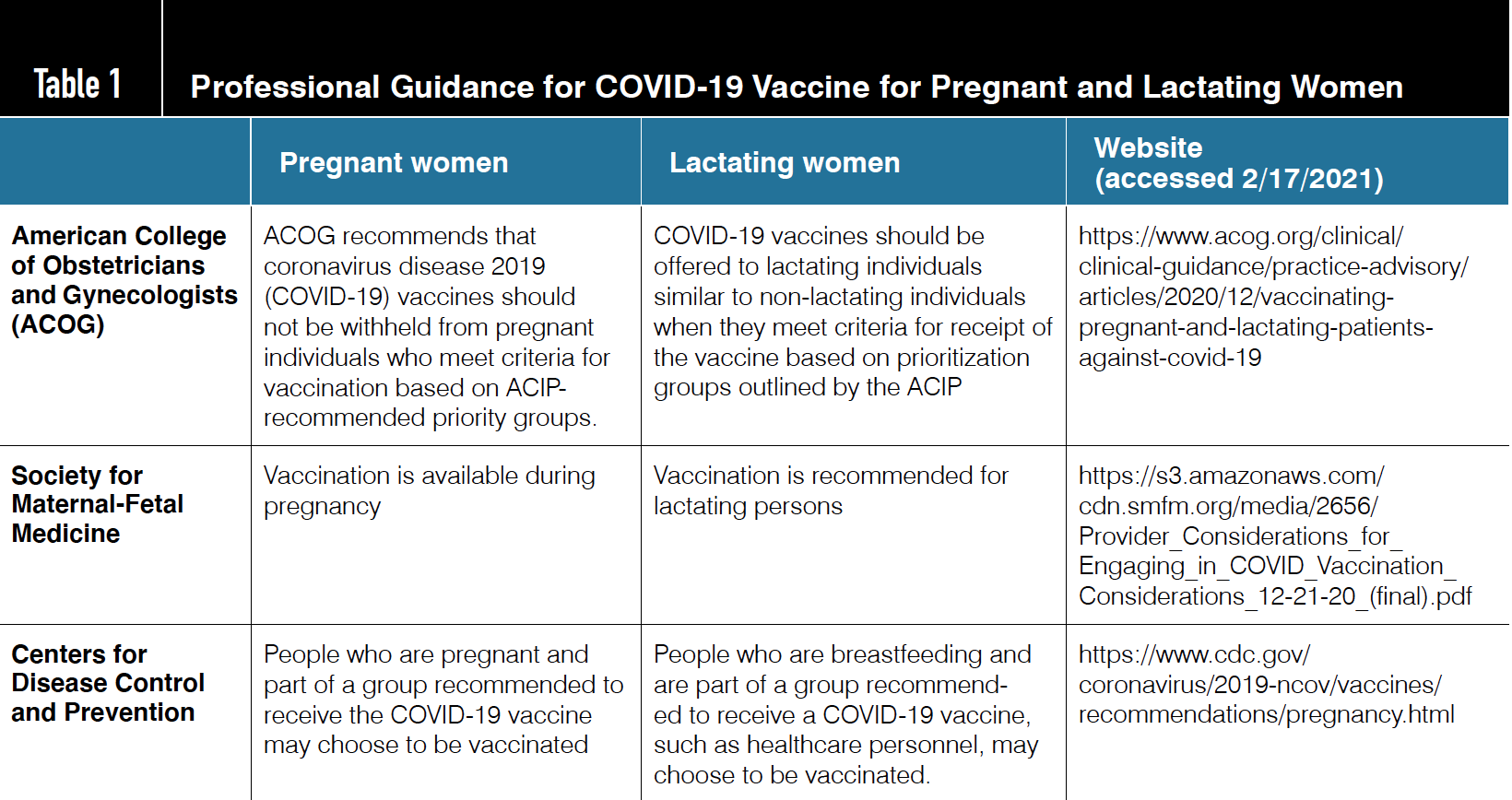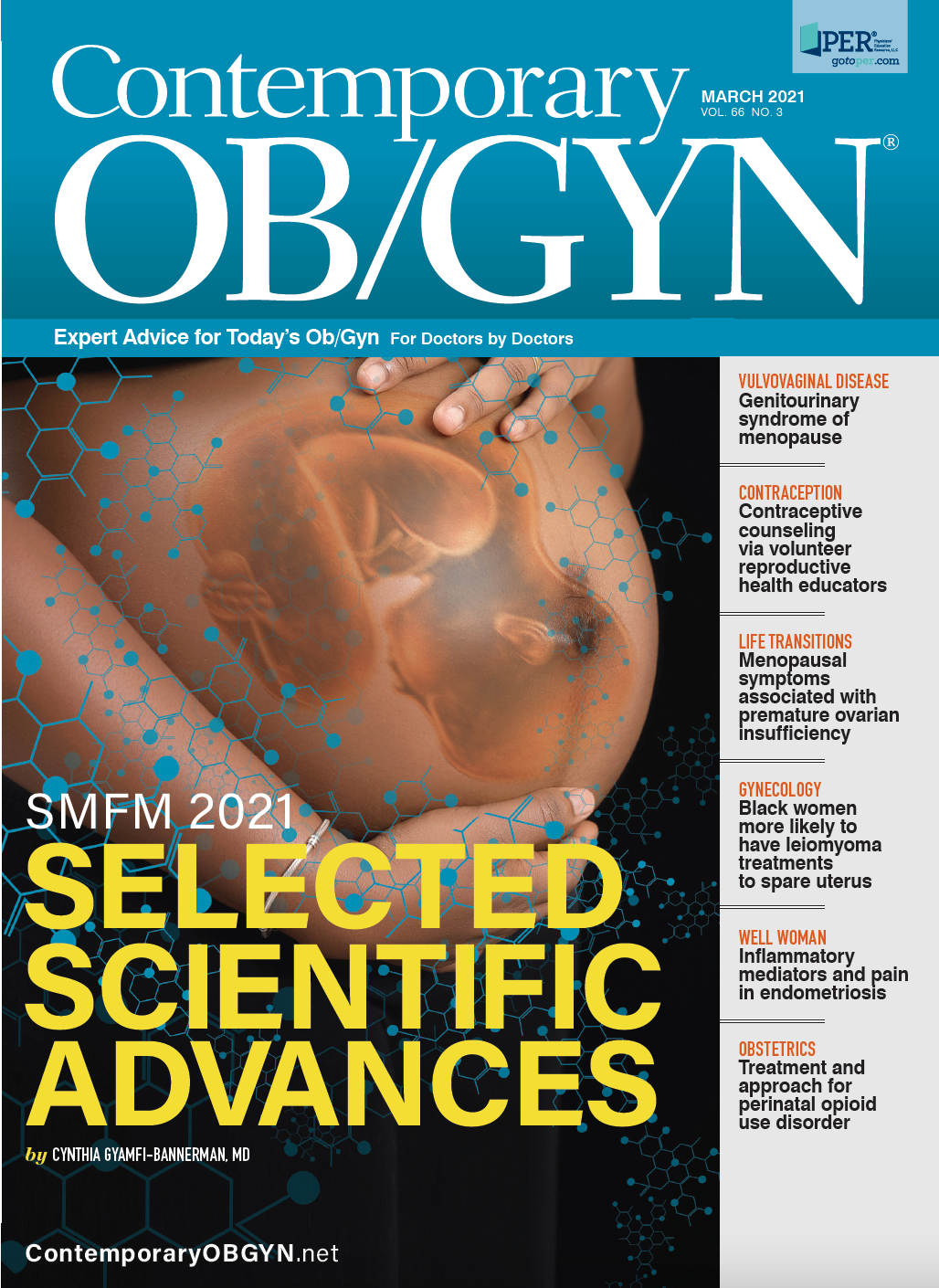A Missed Opportunity
A major missed opportunity. Decades of effort including the development of guidance and implementation by individuals, groups, professional organizations, even the United States Congress, to address and facilitate inclusion of pregnant and lactating people in research and trials held no sway in the studies addressing the coronavirus disease 2019 (COVID-2019) pandemic.
As is clear from publications (and even my daughter's eighth grade science project, “COVID-19 Vaccine: Effectiveness Limited by Inclusion?”), neither group was included in therapeutic product or vaccine development for COVID-19.
As one who is passionate on the topic, I am disheartened by the lack of progress. Of many recommendations by experts, I see some opportunities that are surmountable and some that are critical, but difficult, to address.
First, an inclusion mandate should be required for pregnant and lactating people in research. At present, pregnant people are excluded from research by default. Those governing, funding, and/or mandating trials should require an explanation of why pregnant and lactating people are excluded. In 1993, with the passage of the National Institutes of Health (NIH) Revitalization Act, NIH-funded investigators were required to include women in human subject research1.
The 2000 U.S. Government Accountability Office Report on Women’s Health found significant progress in representation of women in clinical trials because of the requirement of assessment of their inclusion as part of the scientific merit of the research grant2. In the past several decades this has expanded and now all NIH grant applications include a section on inclusion on the basis of sex/gender, race, ethnicity, and age in clinical research3. Further expansion to include pregnant and lactating people is an attainable short-term goal that will focus the inclusion by default.
Second, recommendations for pregnant and lactating people should be more clear and not phrased in language that has a negative connotation. The phrasing of recommendations, especially for pregnant and lactating people, is critical; and when written in a confusing or negative framing, raise alarm.
For example, although not included in the clinical trials, both the Food and Drug Administration (FDA) and Centers for Disease Control and Prevention were permissive for pregnant and lactating people to receive the vaccine. Our professional organizations, the American College of Obstetricians and Gynecologists (ACOG) and the Society for Maternal-Fetal Medicine (SMFM), worked with the experts to devise guidance in the absence of data. However, in an attempt to be unfailingly cautious, the verbiage for pregnant women is negative – “should not be withheld,” rather than positive – “should be offered,” as is the case for nonpregnant and lactating people (Table).
Table 1. Professional Guidance for COVID-19 Vaccine for Pregnant and Lactating Women

Similarly, the NIH’s Coronavirus Disease 2019 (COVID-19) Treatment Guidelines include a section on pregnancy, which I take as a positive step to be included in the considerations; however, the language is negative, “The COVID-19 Treatment Guidelines Panel…recommends that potentially effective treatment for COVID-19 should not be withheld from pregnant women because of theoretical concerns related to the safety of therapeutic agents in pregnancy.4”
Furthermore, at times guidance was unclear and misguided, as noted by the World Health Organization’s statement on January 26, 2021, that pregnant women should not receive the Moderna vaccine, then rescinding that statement days later—but the damage was done. With these missteps, additional education and clarification are needed, and opportunities for vaccination are lost.
As is often said, the elephant in the room for inclusion is that of liability, intertwined with litigation. Until progress is made to mitigate liability, implement targeted incentive programs, and/or strengthen the authority of the FDA to require clinically relevant data on pregnant and lactating people, real progress on inclusion of pregnant people in development of therapeutic products or vaccines is not possible.
Understandably, pharmaceutical companies are not interested in testing novel therapeutics in pregnant and lactating people given the potential of teratogenicity – further complicated by the complex physiology and metabolism. This seemingly insurmountable task has been discussed ad infinitum by experts.
With no entity charged or overseeing the task, there is no clear path forward. A champion is urgently needed to motivate, legislate, and/or creatively innovate a path forward.
Clearly the COVID-19 pandemic has further highlighted the disparity for pregnant and lactating people. Without data, education and communication are key for the discussion of COVID-19 vaccination and therapies in our patients. One thing is certain—death crosses the placenta, and we all have seen or heard of fatal cases of COVID-19 in pregnancy.
Preventing severe and critical COVID-19 illness in our pregnant and lactating patients is of highest priority. Creating the evidence base through research for our pregnant and lactating patients is essential, with a default of inclusion not exclusion.
References
1. National Institutes of Health (NIH). Title 42—The Public Health and Welfare. § 289a–2. Accessed February 19, 2021. https://www.govinfo.gov/content/pkg/USCODE-2011-title42/pdf/USCODE-2011-title42-chap6A-subchapIII-partH-sec289a-2.pdf
2. U.S. Government Accountability Office. Women’s Health: NIH Has Increased Its Efforts to Include Women in Research. HEHS-00-96: Published: May 2, 2000. Publicly Released: May 2, 2000. Accessed February 19, 2021. https://www.gao.gov/products/HEHS-00-96
3. National Institutes of Health. Guidelines for the Review of Inclusion on the Basis of Sex/Gender, Race, Ethnicity, and Age in Clinical Research. Updated March 18, 2019. Accessed February 19, 2021.https://grants.nih.gov/grants/peer/guidelines_general/Review_Human_Subjects_Inclusion.pdf
4. National Institutes of Health (NIH). COVID-19 Treatment Guidelines. Special considerations in pregnancy. Updated August 27, 2020. Accessed February 19, 2021. https://www.covid19treatmentguidelines.nih.gov/special-populations/pregnancy/

FDA approves Visby’s test for at-home STI identification
Published: March 28th 2025 | Updated: March 28th 2025The FDA has approved Visby Medical’s at-home sexually transmitted infection test, allowing women to screen for chlamydia, gonorrhea, and trichomoniasis without a prescription.
Read More
